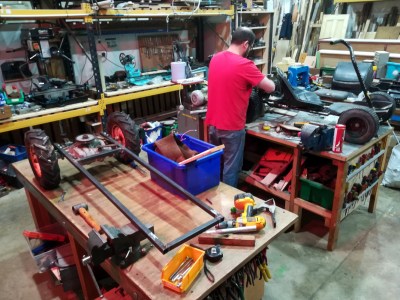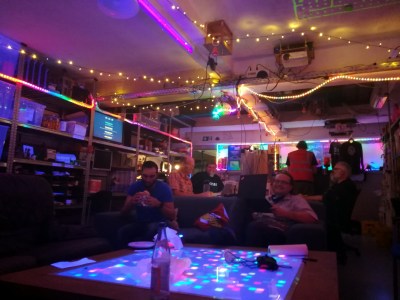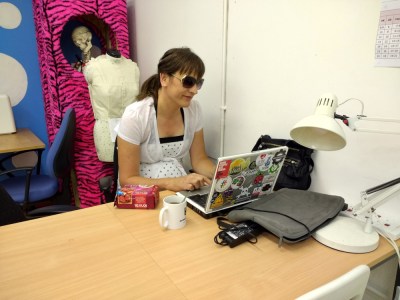If I could name one thing which has been the most transformative for our community over the last couple of decades, it would have to be the proliferation of hackerspaces. Ostensibly a place which provides access to tools and machinery, these organisations have become so much more. They bring together like-minded people, and from such a meeting of minds have come a plethora of high quality projects, events, and other good things.
Just What Is A Hackerspace?

Hackerspaces loosely come in many forms, from co-working spaces or libraries who have invested in a 3D printer and imagine themselves to be a hackerspace, through to anarchist collectives in abandoned warehouses who support their city’s alternative communities with technology. For me, hackerspaces must be community organisations rather than for-profit ones, so for the purposes of this article I’m not referring to closely-allied commercial spaces such as FabLabs.
So a good hackerspace for me is a group of tech enthusiasts who’ve come together, probably formed a non-profit association, and rented a dilapidated basement or industrial unit somewhere. The tools and machines inside aren’t shiny and new but they mostly work, and round that fridge stocked with Club-Mate you’ll find a community of friends, people who don’t think it’s odd to always want to know how things work. In a good hackerspace you’ll have found your place, and you can be much more than you would have been alone.
I visit plenty of hackerspaces across Europe as I wander the continent on an Interrail pass. I’m a member of three of them at the moment, though my main home in the UK is at Milton Keynes Makerspace. I’ve sat on recycled sofas drinking caffeinated beverages in more cities than I can count, and along the way I’ve seen close-up the many different ways a hackerspace can be run. I’ve seen spaces falling apart at the seams, I’ve seen ones a little too regimented for my taste, and others with too much of an emphasis on radical ideology, but mostly I’ve seen spaces that get it about right and I feel at home in. So perhaps it’s time to sit down and talk about what I think makes a good hackerspace. What is my space?
It’s More Than Just The Space

Unsurprisingly, the space itself is secondary to how good a hackerspace is, though there are some that are lucky enough to have amazing premises. In Milton Keynes we share for the moment a large industrial unit with an organisation which provides a social and workshop space for old guys, and while that means we have a huge workshop, it’s not that which makes the space a good one to be a member of, instead that’s the community. But even the community is a fragile entity in a hackerspace, as what works for one section may not work for another. At this point what makes a really good hackerspace differentiates itself from the rest, and it’s worth going into why.
The flavour of a hackerspace starts from its very beginning when a group of geeks have that first meeting in a pub somewhere, though at that point they probably don’t realise it. They face a choice as to how the space is run, whether for example it follows the consensus model, the laid-back board model, or a more direct management model. Quite a few of the first wave of European hackerspaces followed the consensus model, while more recent ones have taken a board-based approach in which the general membership get their say in choosing the board but not in how the space is run. In my experience of being a member of a consensus-based space the drama level was simply too high for my tastes, and I think that had a detrimental effect on both the community and the continuity of the space. By comparison the board-based spaces seem to be much more stable, and being a member is more enjoyable.
It’s possible then for a group of people to start a hackerspace with good governance and an active community. But they’re not finished yet, and in describing why I think that I may be about to descend into a zone which will be controversial for some. Perhaps I should start with a remark I made a few months ago to a friend in the hackerspace community; that I knew of at least four women who had been put off by their space. To be clear, the space in question is great, it’s a favourite of mine that has done all the right things to make a sustainable community that’s a joy to spend time in. It’s not even fair to point the finger at this space alone, I’m certain I could find many other great spaces with exactly the same issue. Putting it simply, the hackerspace community so often isn’t providing the environment needed to attract the people it should, and if my saying that offends you then It’s a fair guess you don’t manage your hackerspace’s membership. No space can afford to turn away members, yet that’s what many are doing. It’s the how and the why that we should be doing better as a community.
Sometimes We Don’t See Ourselves As Others Do

The question of broadening the appeal of a hackerspace has been a concern of mine ever since I walked into my first hackerspace over a decade ago. Hackerspaces can be intimidating places if you’re not one of the in crowd, and it only takes one thing to turn someone away for good. It’s easy to unwittingly form an impenetrable clique, or to have members place themselves as barriers to entry without realising it, by gatekeeping access to tools or equipment. Add to that another of the things which bind us, that many of us including me are not neurotypical, and even a well-run hackerspace can feel insensitive, alien, and downright hostile. We can definitely do better than this, and if we do so then our spaces can only become stronger.
How to tackle this probably depends to a great extent on circumstances. In some cases the equipment on offer can affect the type of people attracted. As an example BioCurious Labs, a makerspace for biotech in Silicon Valley, attracts a different crowd – more artists, scientists, and other bright, curious people from a wider array of backgrounds than the more usual technology-focused hackerspace. The best approach to this problem I’ve seen for myself came from an unexpected angle, in starting a textile operation. This wasn’t through some old-fashioned notion that women sew, but to attract members who would normally never consider a hackerspace, namely those mostly older women who do knit or sew. The aim of their presence was to subtly change the atmosphere to the extent that prospective members such as those women who found themselves put off would find it more welcoming. My first hackerspace in Oxford did this with some success, and I am very pleased to have seen it spontaneously happening in MK, too.
So given the above, what is my space? It’s one where the running of the space doesn’t get in the way of being a member, and the atmosphere doesn’t put me off being a member in the first place. My space where I’m from in the UK is Milton Keynes Makerspace, and when I’m not on my travels around Europe, it’s home. I’ll put the kettle on.

Zita boo
Interesting